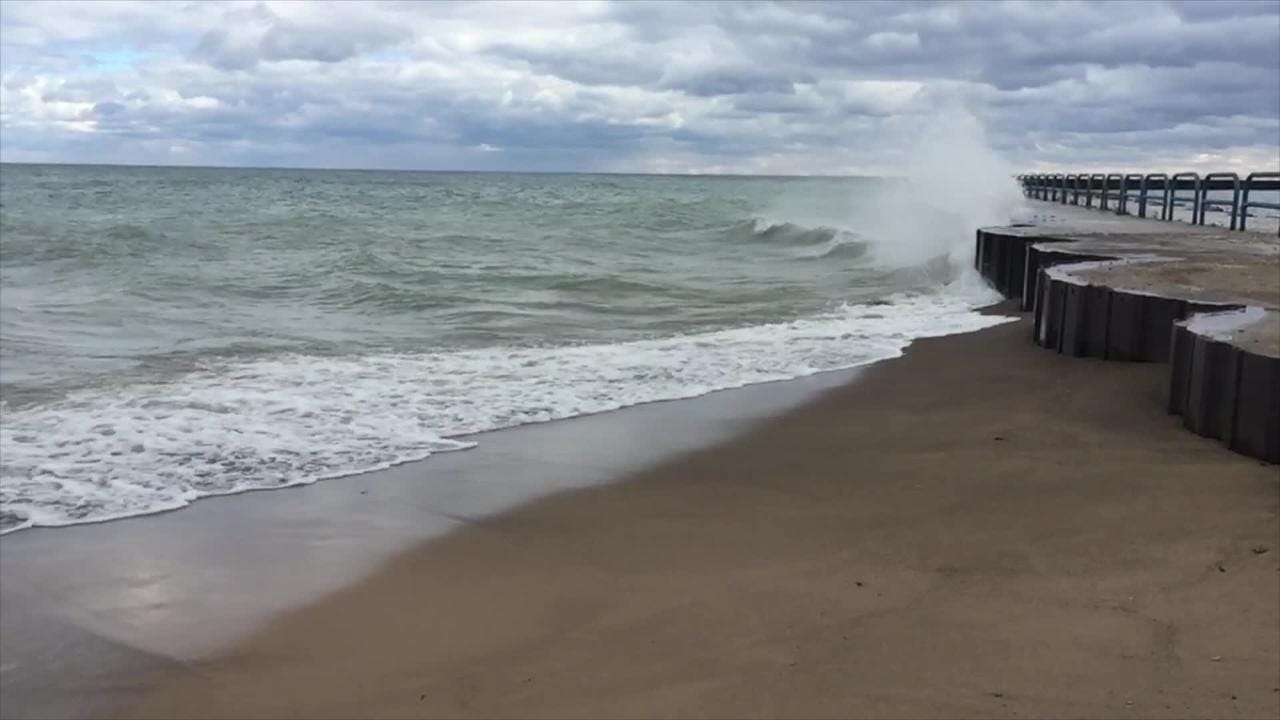Can you estimate the height of waves 5 miles distant. No. You cannot see that far with sufficient visual acuity, And the horizon in all three of your pictures is about 3 miles or so. Also, waves stand in the way of seeing waves, you are looking at only the tops. What you can do to guesstimate…
Serrate horizon, don’t even think about going out.
Local knowledge. Every location is filled with unknown common shoreline shapes, wind direction, bottom surface shapes, there is zero substitute for local knowledge.
Waves need depth to exist. ALWAYS the waves farther out, deeper water, will be larger. Total waves heights approaching the shore the need 10 times the depth vs the height. Look at your second picture. I see three and perhaps four breaking lines out there, and I see nominal 1 to 2 foot waves breaking at the shore. I also see pretty much just green water at the horizon. My guess based upon years of experience. A developed sea (the waves are not growing) and so if the ones at my feet are 1 to 2, the next line out is thew 2 to 4, and the third line breaking is the 4 to 6 line. Offshore, I would figure rollers, non-breaking 4 to 6 foot waves, maybe plus a bit.
The fourth photo, white dots all the way out, a developing sea, waves are growing, each white cap is a small breaker, do not go out,You do not know how large the waves will develop to.
Wind speed vs wave height. This can be deceptive. Waves can travel hundreds of miles, so the winds here, and now, may simply be laid atop, or across the old long distance waves, rollers, sea swells.
But, 20 kts sustained will produce a real 3 foot sea + or - depending upon a wealth of factors, length of time its been blowing from that direction, fetch, etc. Take kts, divide by something between 1/5th or 1/7th and you have a ball park for height in feet, Divide by 5 you get 4 footers, divide by 7 and you get 3 footers… AND ALWAYS understand waves are measured by their low mean average. Low Mean Average means, one in ten will be 25% larger, and one in a hundred will be 50% larger. So on a 4 footer day, there are a few 6 footers out there. On a 12 to 15 meter sea state (I have personally seen this once on Lake Huron), there are 60 to 70 foot waves out there. One month ago the buoy two miles off Port aux Basque recorded a 30 meter sea, a 100 footer. 2 miles out.
Your first photo shows a wind direction change, waves coming from one direct and spray blowing in another direct. That was likely at a point that sticks out into the body of water, the waves trying to turn the corner, In either case, Don’t go out. The polite term is ‘a confused sea state’.
Second photo, if you do not mind round shoulder 6 footers, I’d go our
Third photo cannot tell, Local knowledge required.
Fourth photo If I knew the area and I wanted a rip snorting day, I might go out. But it could get ugly if the wind maintains or gets higher.
So, the recap, No you cannot estimate the wave height 5 miles out. And from my own experience, imagine for a moment 1491, pre- Columbus, walking the ‘wilderness’ that only our native Americans saw, walked. Once you are 2 miles out, you ARE in wilderness every bit equal to that pre-columbian wilderness. There is a rouge wave, there is a great white under you, a grizzly just walked into camp, wilderness. Just two miles out. It ain’t nothin’ to fool with. You have to know what you are doing.




